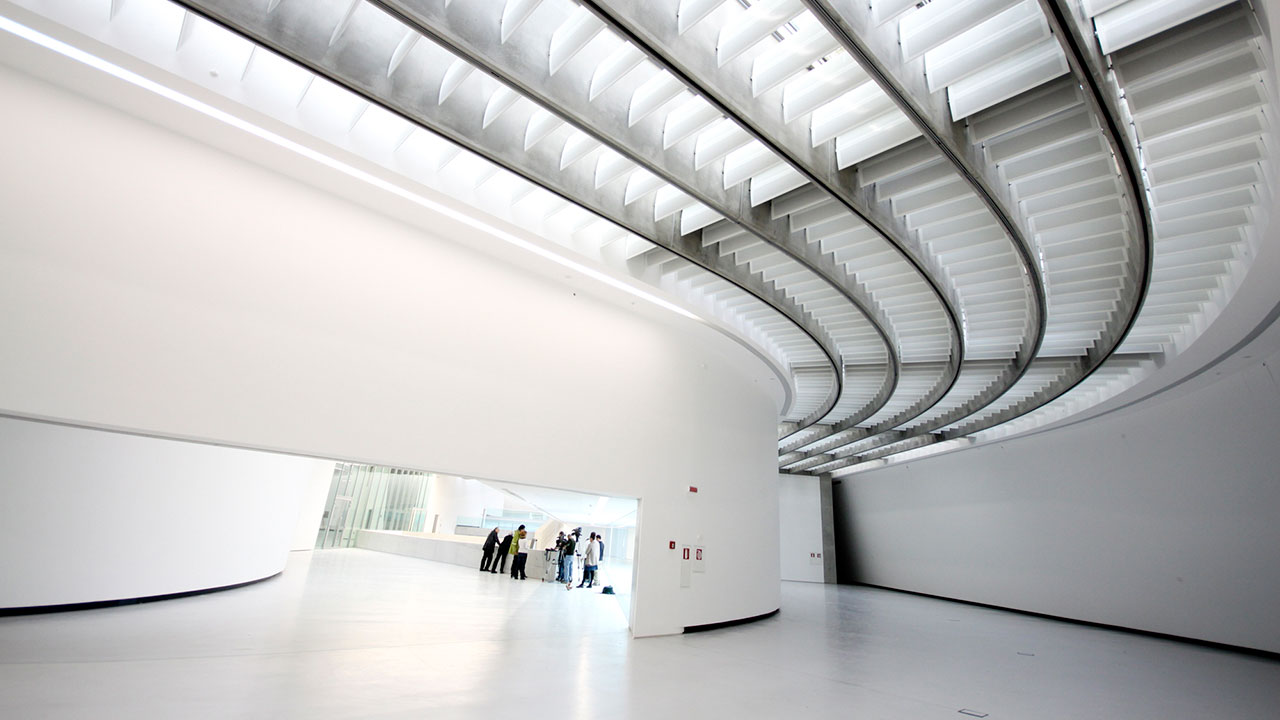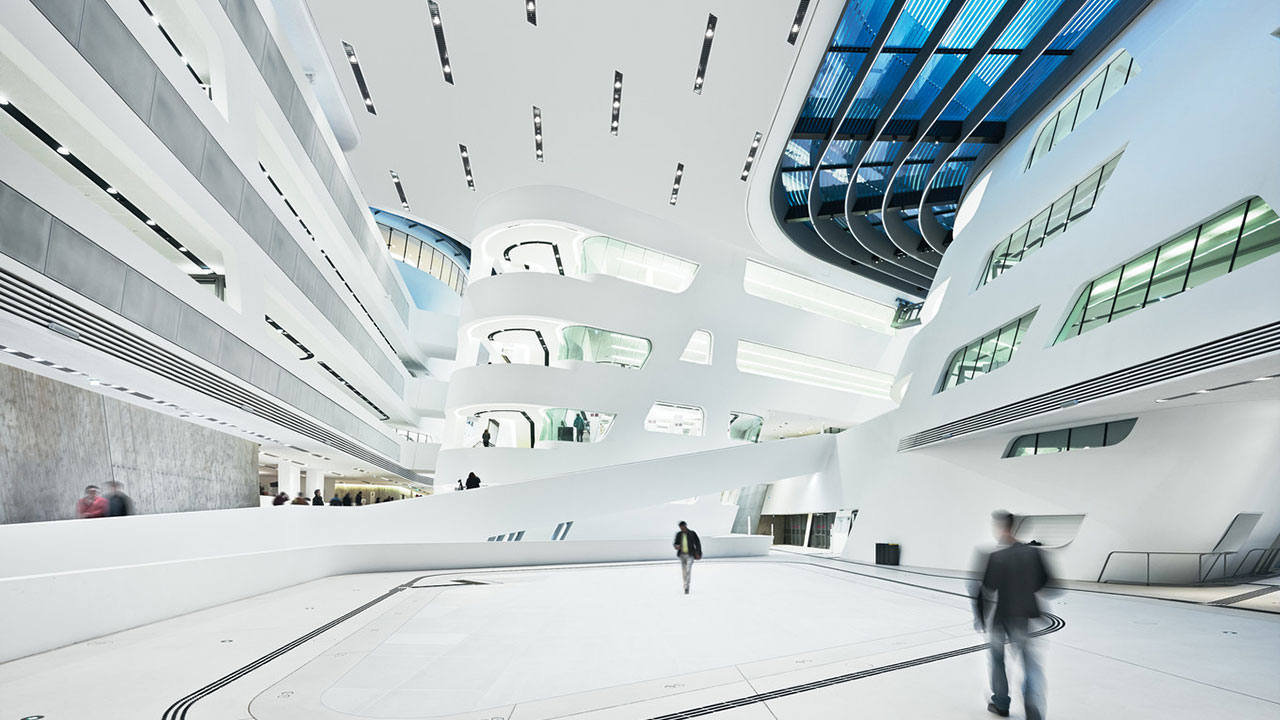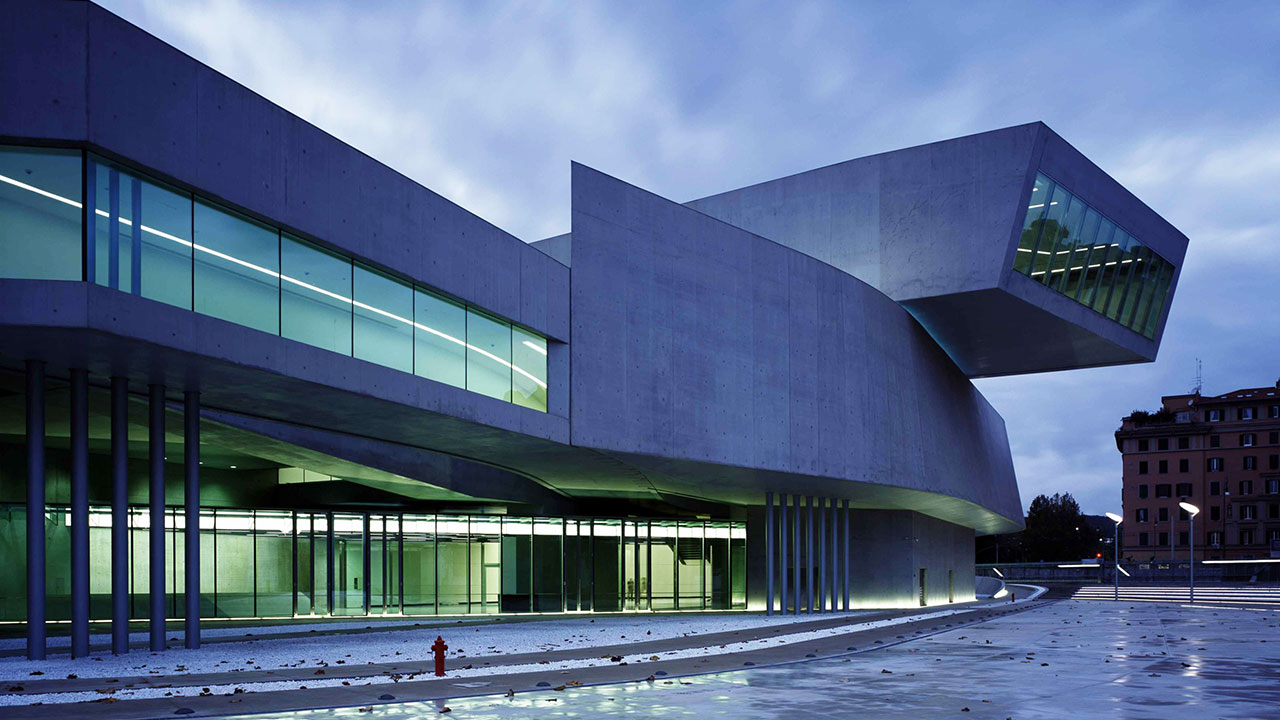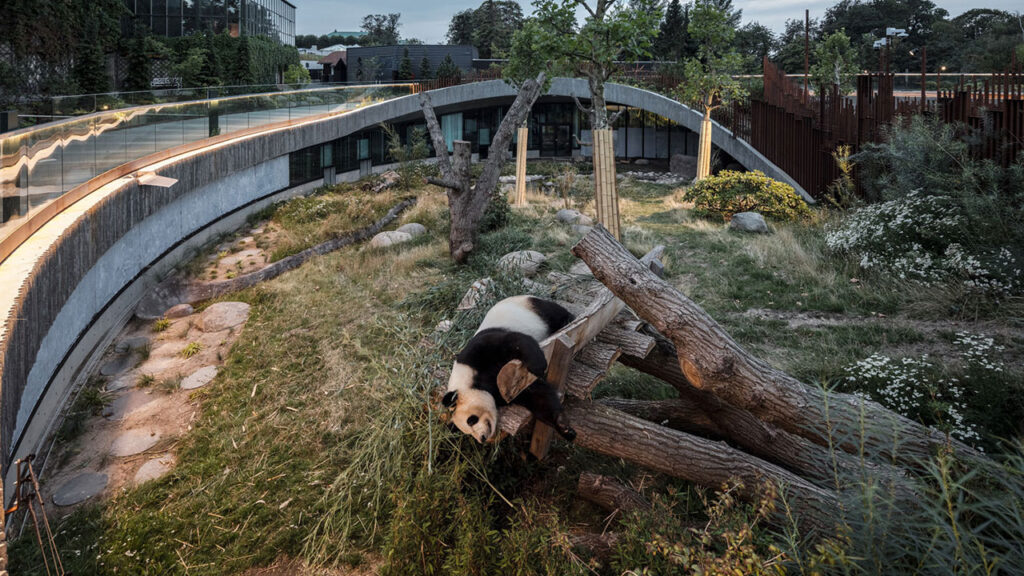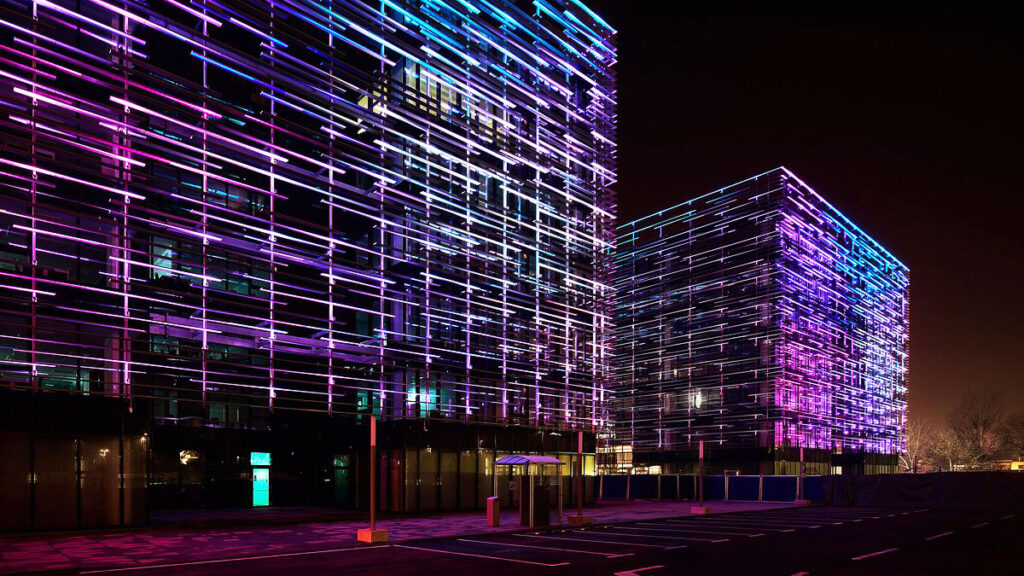MAXXI: National Museum of the 21st Century Arts
The MAXXI is one of the Zaha Hadid’s masterpieces, which is located in the Flaminio quarter of Rome, in the area of the former Montello military barracks. The two important elements of the building are the concrete walls and the transparent roof which is composed of the systems for filtering sunlight, artificial light, and environmental control.

The MAXXI is one of the Zaha Hadid’s masterpieces, which is located in the Flaminio quarter of Rome, in the area of the former Montello military barracks.
The MAXXI is an urban complex, hosting two museums, an auditorium, library and media library, bookshop and cafeteria, spaces for temporary exhibitions, outdoor spaces, live events and commercial activities, laboratories, and places for study and leisure.
The building is consisting of fluid and sinuous shapes that we are very familiar to see in Zaha Hadid works.
The two important elements of the building are the concrete walls and the transparent roof which is composed of the systems for filtering sunlight, artificial light, and environmental control.
The major aim of the lighting design is to have the natural light in the building at the maximum level. The homogenous general lighting is a combination of natural and artificial light controlled by a lighting management system. During the day, many of the galleries are illuminated with natural light that is carefully adjusted to provide suitable lighting requests.
Spotlights, installed on the ceiling tracks, are used for point illumination of the sculptures and luminous stretch ceiling is used as light bands on the ceiling and under the black metal stairs.
Also, hidden light bands along the stair rails give a nice floating light effect on the concrete walls.
On the landscape lighting, for pathways, drive over in-ground luminaires illuminate all over the building and also the undersides of the layered structures.
The piece of the structure which leaping forward of the main building has an independent view due to his underneath concealed light.
At time of the construction fluorescent and metal halide lamps has been used. Today LED and it technologies replay these bulbs.
The MAXII is an admirable concrete “signature object” during the day but much more impressive during the night with all the shadows and darkness created by an illumination completly in harmony with the architecture.
Architects: Zaha Hadid
Area: 27,000 m²
Year: 2009
Sources:
https://archello.com/project/maxxi-museum
https://www.zumtobel.com/media/downloads/PR-ZT-MAXXI_UK.pdf
https://www.bega.com/en/references/maxxi-national-museum-rome/
https://www.zaha-hadid.com/architecture/maxxi/
http://www.giaequation.co.uk/cultural/57-the-maxxi-rome
https://www.maxxi.art/en/

